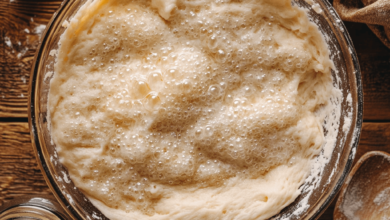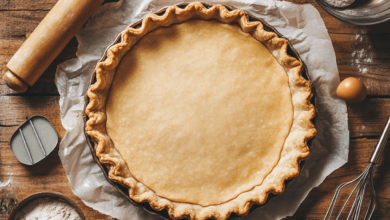What Is the Difference Between All-Purpose Flour and Cake Flour?

Introduction
“What is the difference between all-purpose flour and cake flour?”
Flour is a staple in baking, but not all flours are created equal. All-purpose flour and cake flour have distinct characteristics that affect the texture, structure, and outcome of your baked goods. This guide breaks down the differences between these two types of flour and when to use each for the best results.
1. All-Purpose Flour: The Versatile Option
All-purpose flour is a blend of hard and soft wheat, making it a jack-of-all-trades flour.
- Protein Content: Around 10–12%, providing moderate gluten strength.
- Texture: Produces a denser texture in baked goods.
- Best Uses:
- Cookies, muffins, quick breads, and some cakes.
- Ideal for recipes that need structure without being overly delicate.
Pro Tip: Sift all-purpose flour to create a lighter texture for delicate recipes.
2. Cake Flour: The Delicate Choice
Cake flour is made from soft wheat and is finely milled for a lighter consistency.
- Protein Content: About 6–8%, resulting in less gluten formation.
- Texture: Creates tender, soft, and airy baked goods.
- Best Uses:
- Sponge cakes, angel food cakes, and other light desserts.
- Perfect for recipes where a delicate crumb is desired.
Pro Tip: Substitute cake flour in recipes calling for tenderness and softness.
3. Key Differences Between All-Purpose and Cake Flour
| Feature | All-Purpose Flour | Cake Flour |
|---|---|---|
| Protein Content | 10–12% | 6–8% |
| Texture | Dense and firm | Light and tender |
| Best For | General baking | Delicate cakes and pastries |
Note: Protein content determines how much gluten forms, which directly impacts texture.
4. Can You Substitute One for the Other?
Yes, but adjustments are needed:
- Substituting All-Purpose for Cake Flour:
- Remove 2 tablespoons of all-purpose flour for every cup and replace with cornstarch.
- Sift the mixture to ensure even distribution.
- Substituting Cake Flour for All-Purpose:
- Use slightly more cake flour to match the structure provided by all-purpose.
Tip: Substitutions may slightly alter texture, so experiment with small batches first.
5. When to Use Each Flour
- All-Purpose Flour:
- Use for recipes where structure is key, such as cookies, quick breads, and brownies.
- Cake Flour:
- Perfect for light, airy recipes like sponge cakes and delicate pastries.
Pro Tip: Keep both types of flour in your pantry to ensure the best results for any recipe.
Conclusion
Understanding the difference between all-purpose flour and cake flour can make a big difference in your baking. While all-purpose flour is versatile and widely used, cake flour is ideal for achieving a tender, delicate crumb. By choosing the right flour for your recipe, you’ll enhance both flavor and texture.
For more baking tips and ingredient guides, visit our Kuestion.com.




